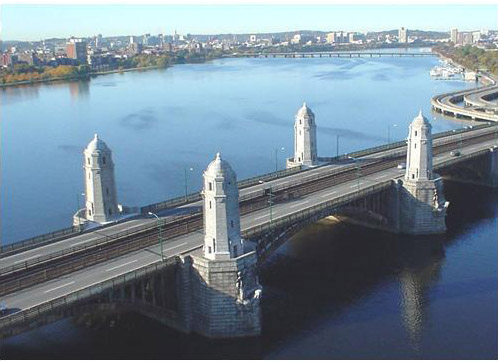
Longfellow Bridge Reconstruction
The Longfellow Bridge carries Route 3, the MBTA Red Line as well as bicycle and pedestrian traffic between the cities of Boston and Cambridge across the Charles River. The bridge was first opened in 1906 and was named after poet Henry Wadsworth Longfellow. A large-scale reconstruction project became necessary to upgrade and modernize this structure and work had to be in keeping with historic preservation guidelines. The bridge currently sees more than 28,000 vehicles as well as 90,000 rapid transit users per day with additional traffic coming from bike and pedestrian uses.
The bridge’s construction began in the summer of 2013 using a design-build project delivery method under the supervision of MassDOT. The $288 million, six-stage project was funded by the Accelerated Bridge Program of which 80 percent of funds were federally allocated with a 20 percent match on behalf of the Commonwealth. Construction was accompanied by outbound traffic diversions, weekend diversions of MBTA Red Line trains and inbound lane closures for the project’s full duration.
The improvements to the bridge have made important strides toward accessible transit for all users. One of the largest reconfigurations was the removal of one outbound vehicle travel lane in favor of dedicated bicycle lanes on both sides. Additionally, sidewalks on either side were widened and brought into full ADA compliance. The new bridge also features new MBTA Red Line infrastructure such as track and signaling replacements.
Due to the hard work and careful planning of MassDOT and the expertise of its contractor teams, the new Longfellow Bridge can be seen to represent a strong partnership between Boston and Cambridge. The leadership of Transportation Secretary and CEO Stephanie Pollack allowed MassDOT to rise to the challenge of improving the capacity of this iconic structure.
Read additional stories from this state:


